It’s not every day you can get a close-up photo opportunity with that most magnificent of craft, The Queen’s Rowbarge Gloriana. Last weekend I found that most splendid vessel moored surreptitiously at Chiswick Pier in West London. It was being prepared to lead the parade at the Oxford-Cambridge Boat Race on Sunday.
Jubilees
The Royal Rowbarge Gloriana was commissioned in time for the Diamond Jubilee celebrations in 2012. Now, it will have a major role to play in this year’s Platinum Jubilee. No other British monarch has reigned for 70 years and, surely, Gloriana is a fitting tribute.
The Thames is Gloriana’s natural habitat and The Queen decreed that this magnificent barge be used to promote better use of the river. This is being achieved through providing opportunities for charities to play their part in occasions and celebrations on the Thames, with particular emphasis on those involving young people. Gloriana also celebrates the Commonwealth and the flags of 16 member counties add gilding to the lily.
Waterborne tribute
The Royal Barge was privately commissioned under the aegis of Lord Sterling, who gained the idea for a waterborne tribute to The Queen from Prince Charles. Lord Sterling financed much of the estimated £1.5m (ca $2m) cost of the project, with additional support from Eyal Offer, the Gosling Foundation, the Weston Foundation, Lloyd’s Register and the Stiftung Kristian Gerhard Jebsen.
She is 90ft (27m) long and powered by 18 oarsmen and two electric inboard engines. She can carry an additional 34 passengers and crew.
According to Lord Sterling, the design is inspired by Canaletto’s London paintings of 18th-century barges. But others suggest the design resembles the barge used by the Lord Mayor of London in the 19th century. I like to think that Queen Elizabeth I, who was rowed up and down the Thames throughout her reign, would have felt quite at home in Gloriana. After all, the 16th-century poet Edmund Spenser gave the name Gloriana to the character representing Elizabeth in his poem The Faerie Queene.
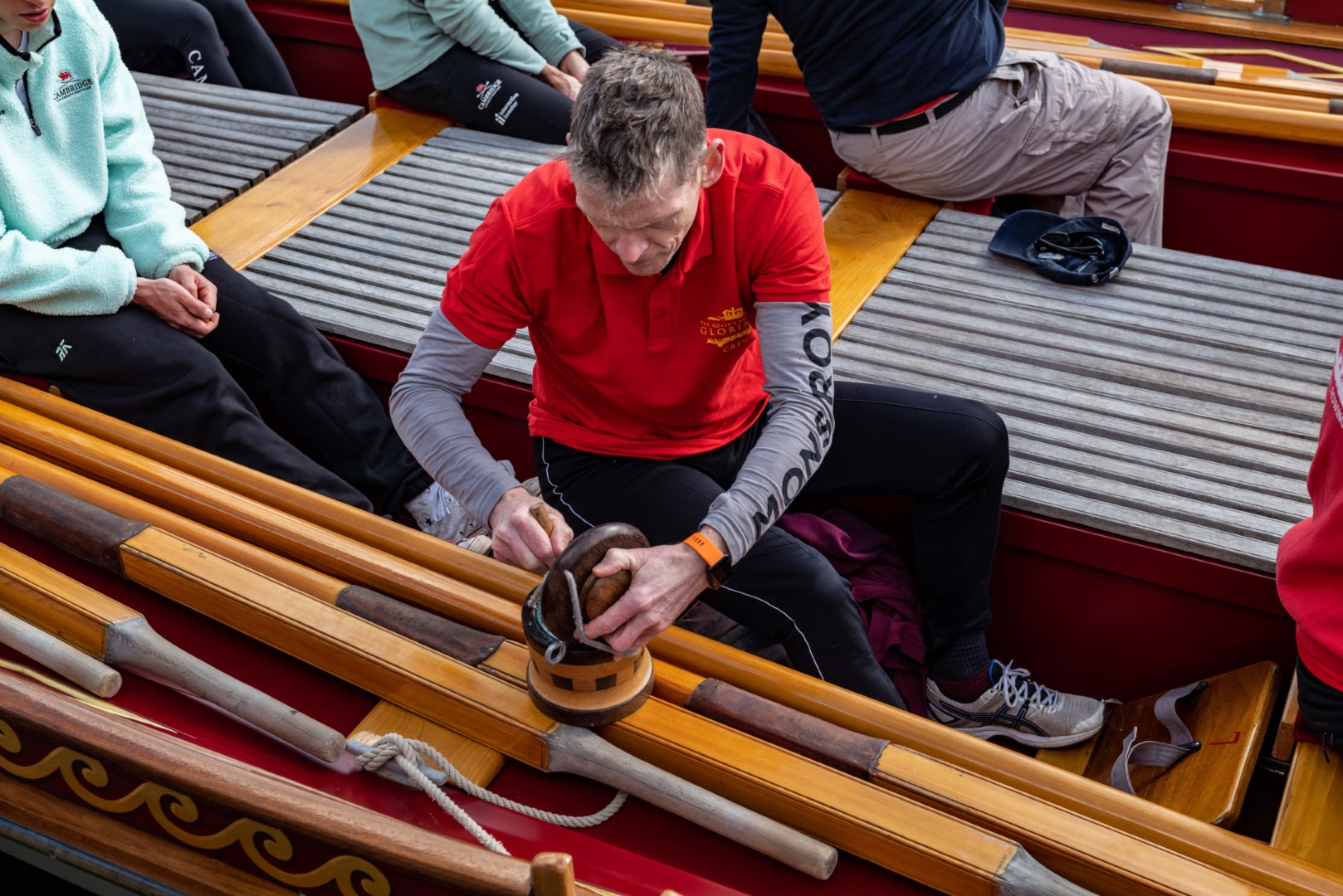
Royal Rowbarge
Construction of Gloriana started in late 2011 at Brentford, just a few miles upstream from Chiswick. The barge is built of wood, using traditional methods, and includes flooring from sweet chestnut trees from Prince Charles’s estate. The sculpture and ornate carvings were made by Polygon Scenery and finished in gold leaf and fine hand painting by Hare & Humphreys. The Queen officially named the rowbarge on 25 April 2012 during a royal visit to the Cutty Sark tea-cutter in Greenwich.
I managed to get close to Gloriana as she was moored last weekend at Chiswick Pier, which lies on the famous Boat Race stretch of the Thames from Putney to Mortlake. By happy coincidence, Chiswick Pier is near to the site of Corney House where Queen Elizabeth I was entertained in 1602 by Sir William Russell, a younger son of the second Earl of Bedford. She would almost certainly have arrived by water, probably in a royal barge similar to Gloriana. But that’s just my speculation, so why spoil a good story, etc…
The photographs in this article were taken by Mike Evans, Leica SL2 and 24-90mm Vario-Elmarit-SL.
See the official Gloriana website
Leave a reply and join in the discussion
The comments section below every article is a friendly, non-confrontational space where you can air your views without fear of stirring the sort of hornets’ nest that is so often a feature of websites. We welcome your views on the content of our articles, and your opinions on all aspects of photography are a lifeblood for Macfilos. Please let us know, in the section below, if you agree or disagree with our authors’ opinions — and please have no hesitation in adding your advice if you think we’ve overlooked anything important.

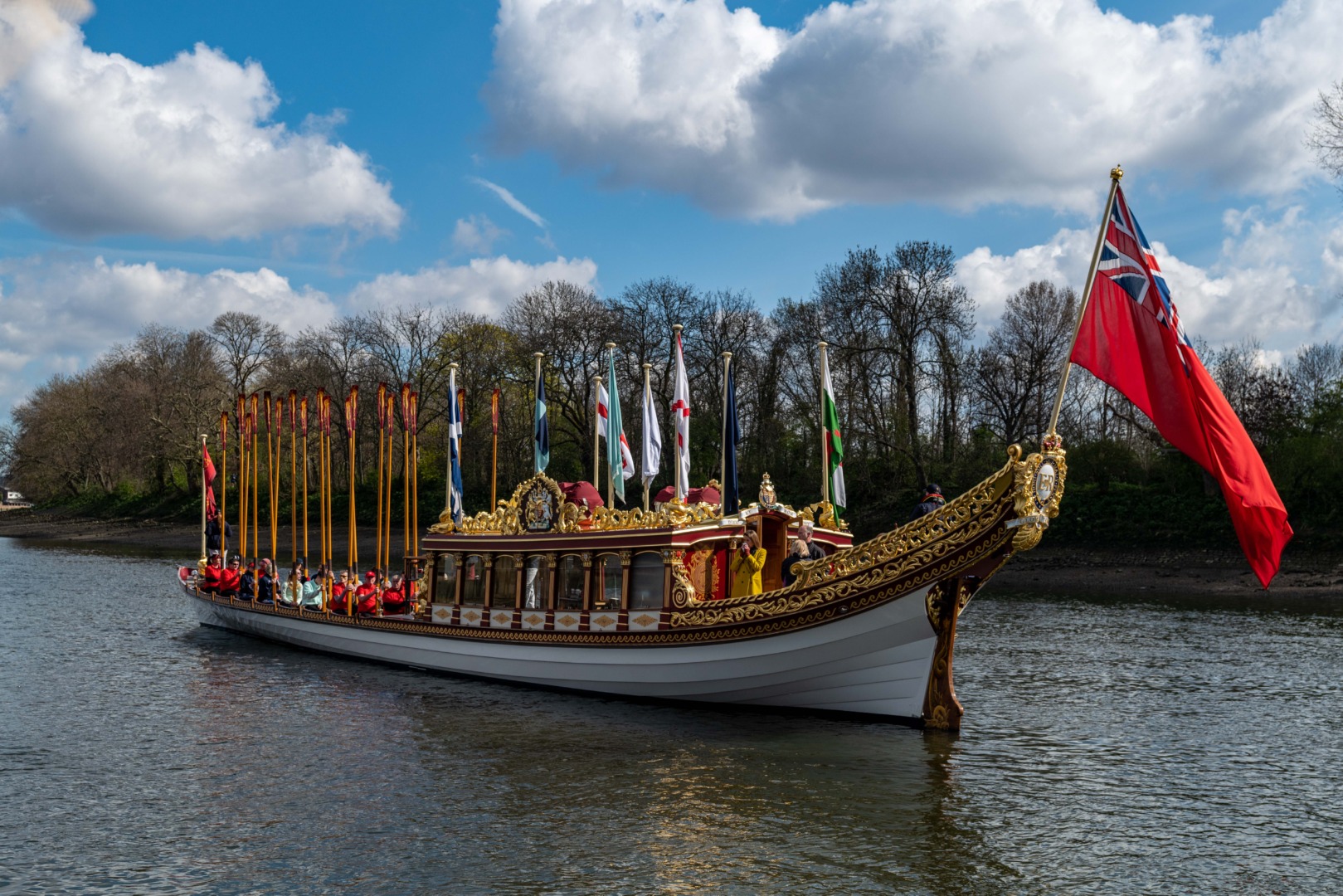
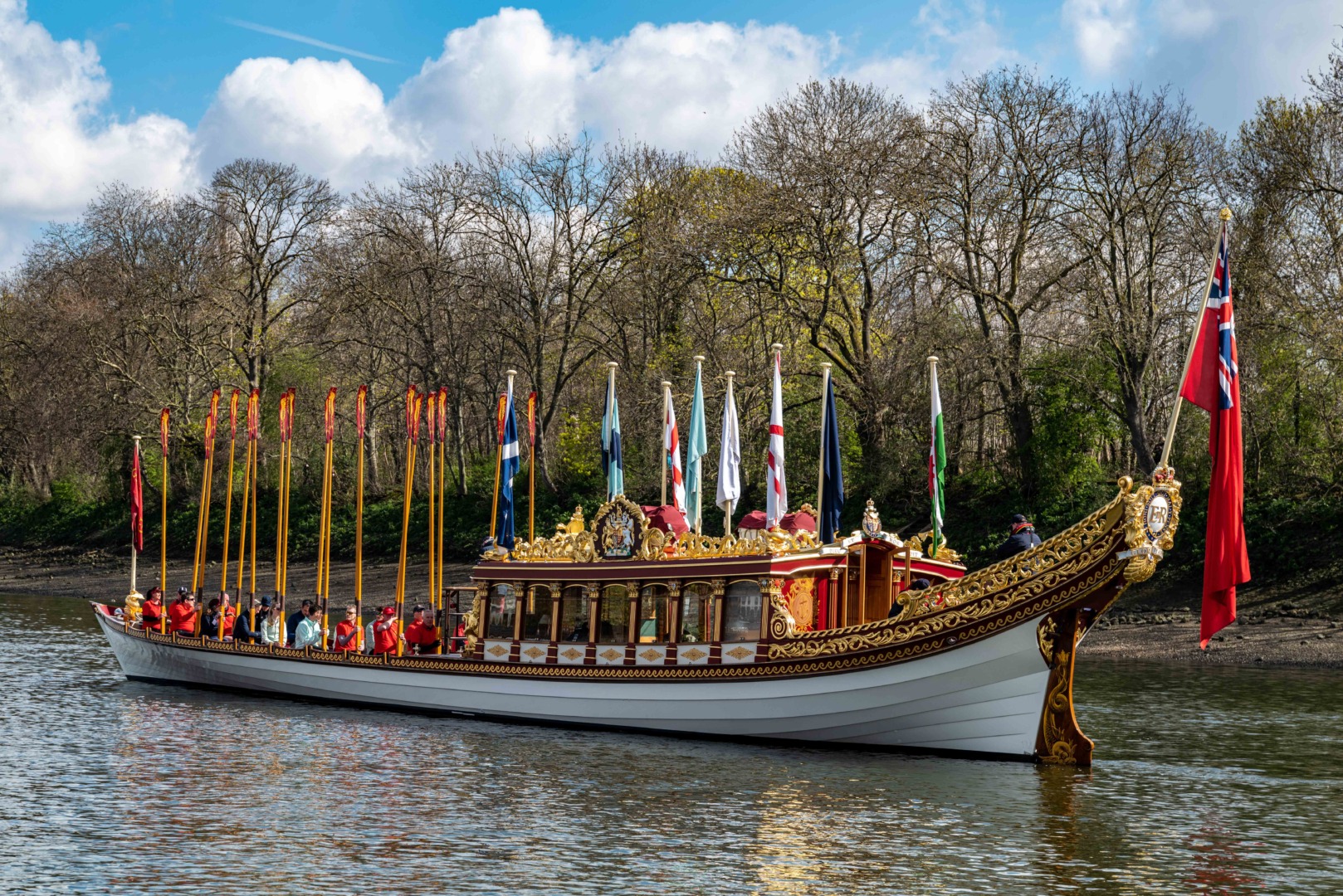
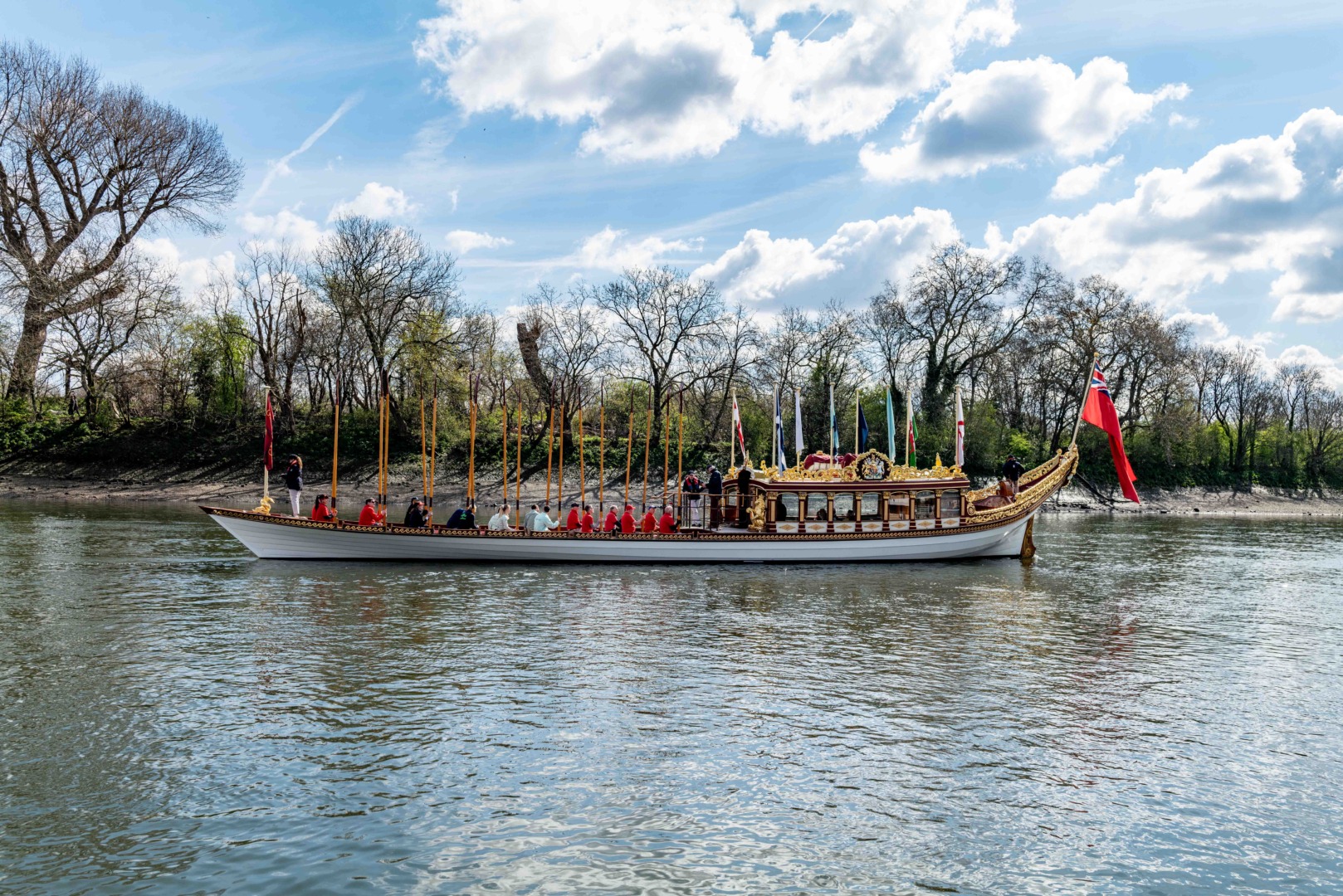



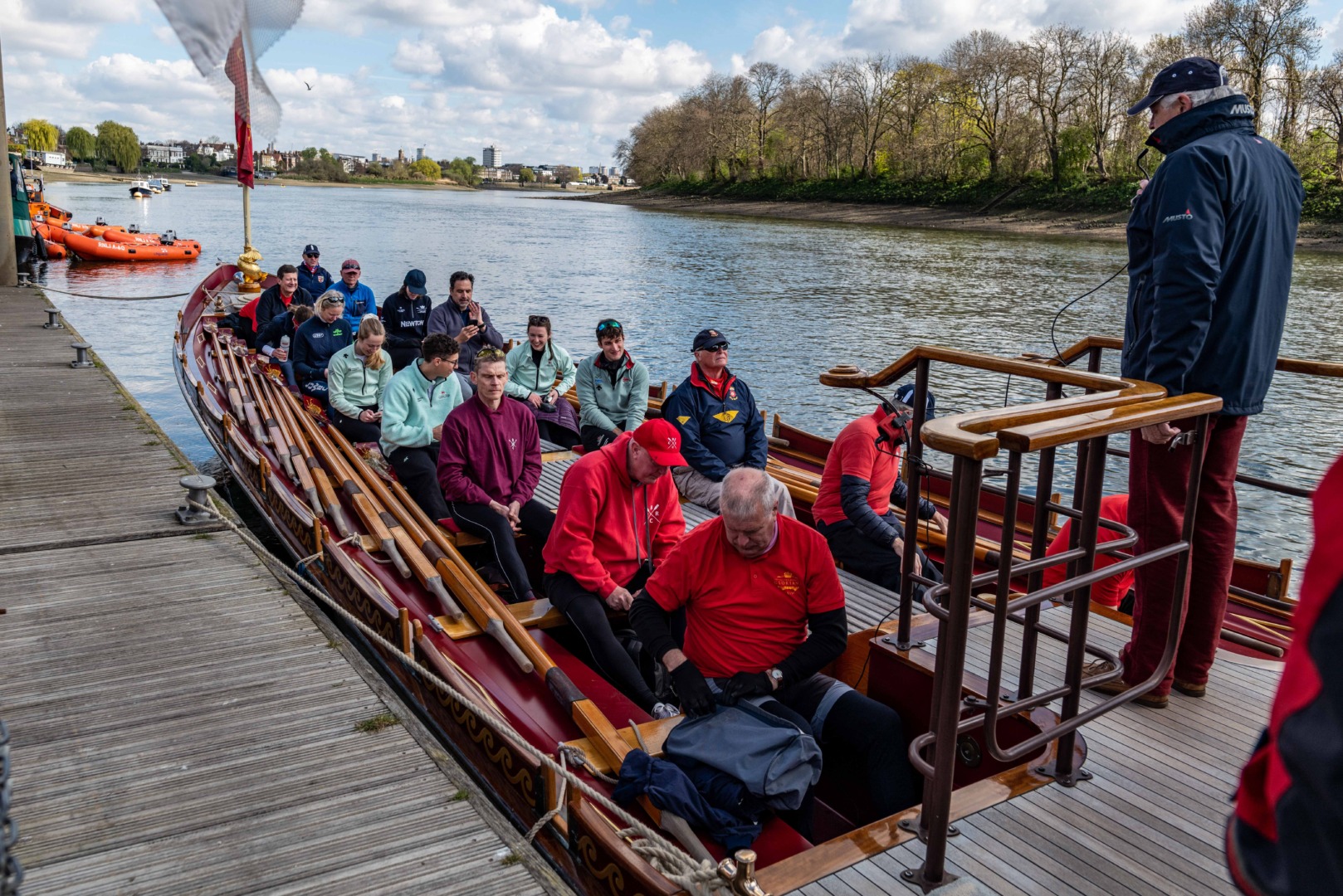
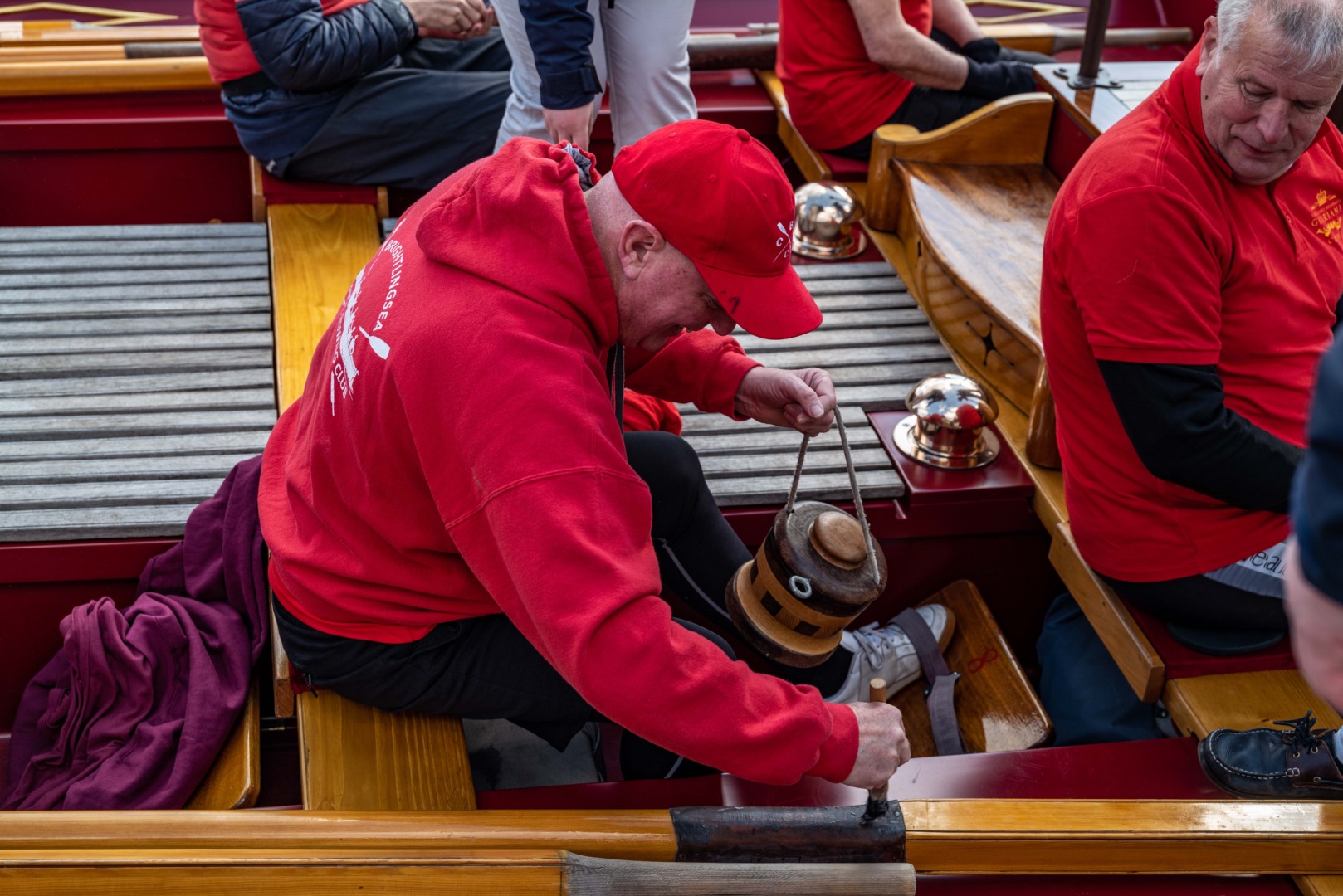
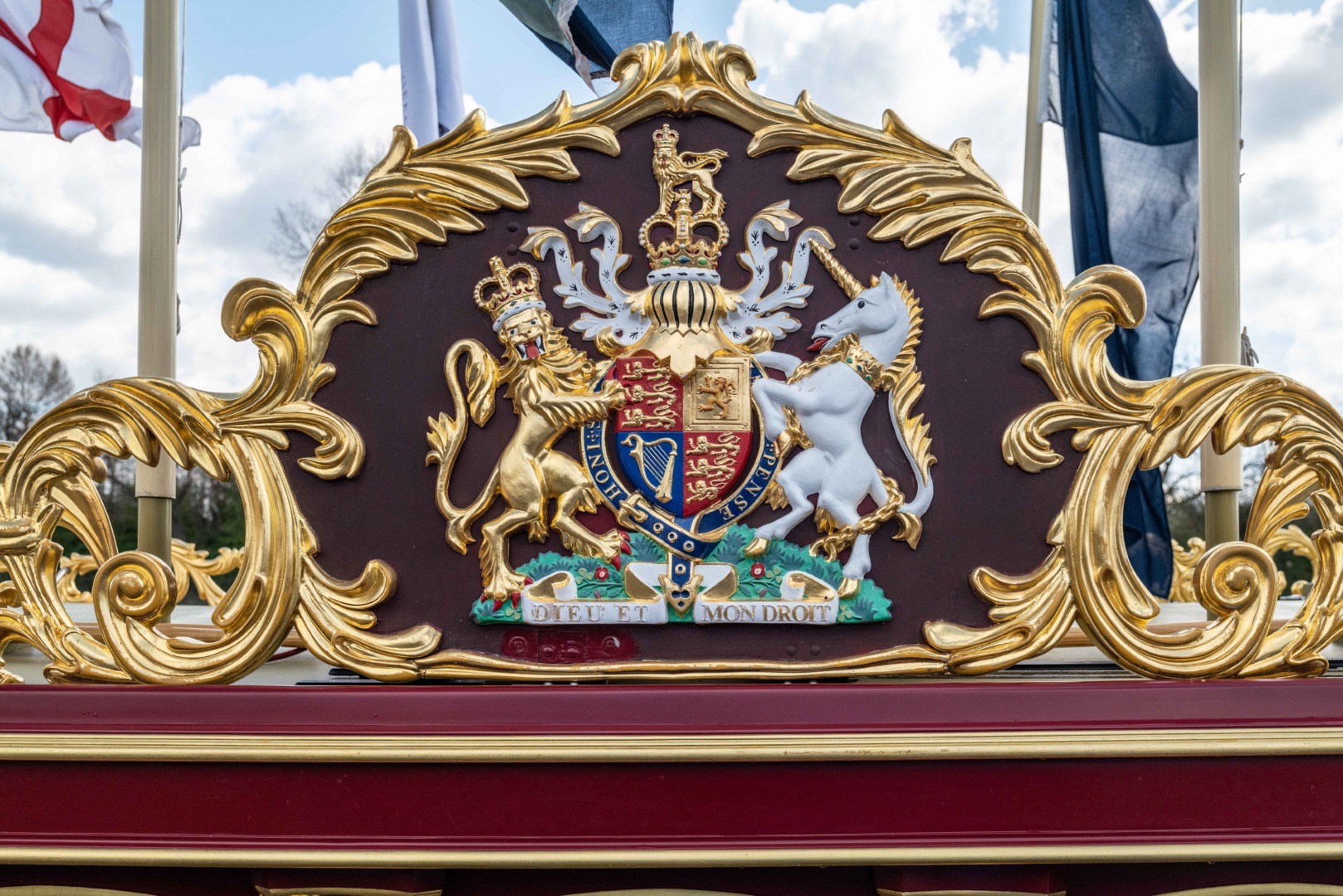
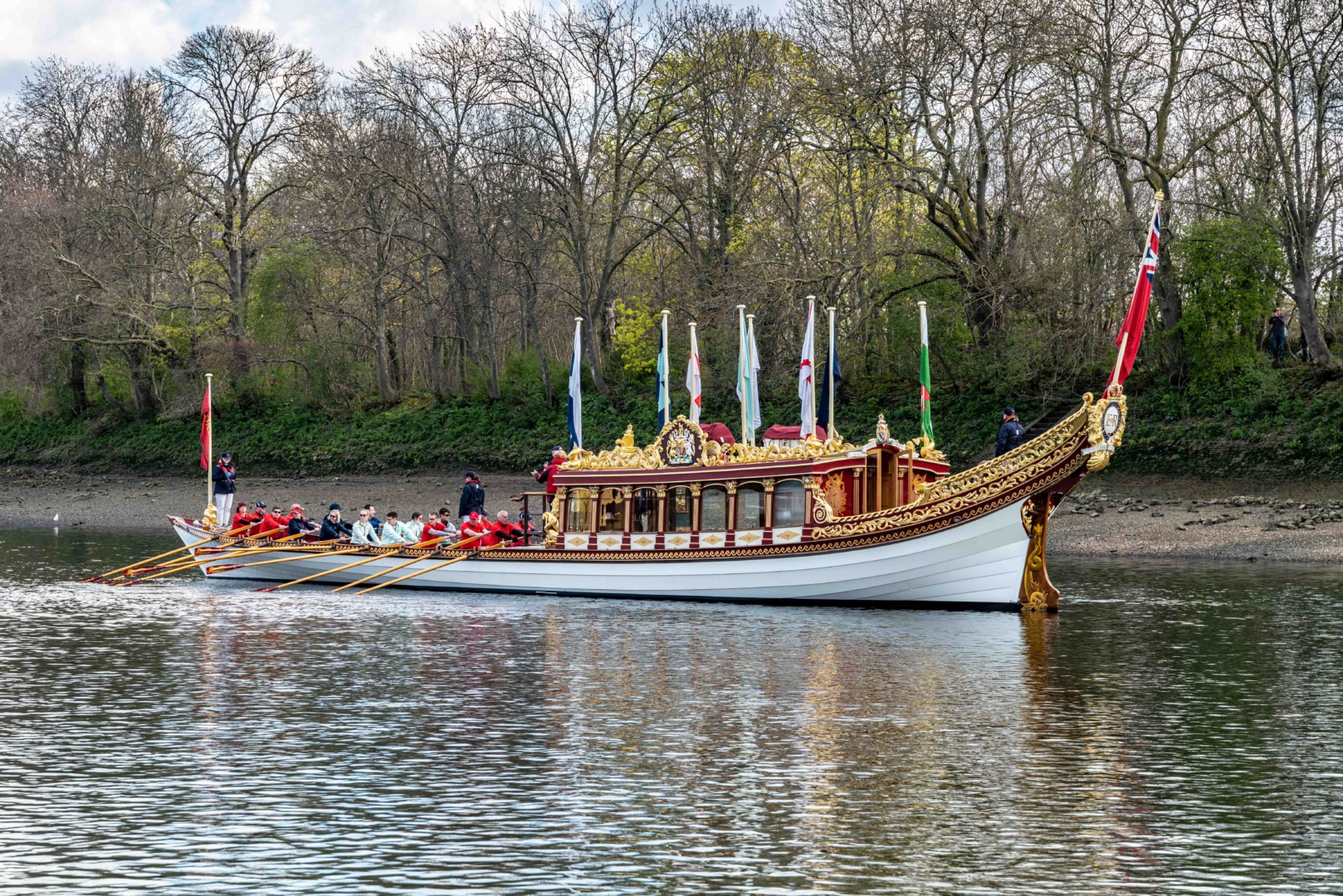
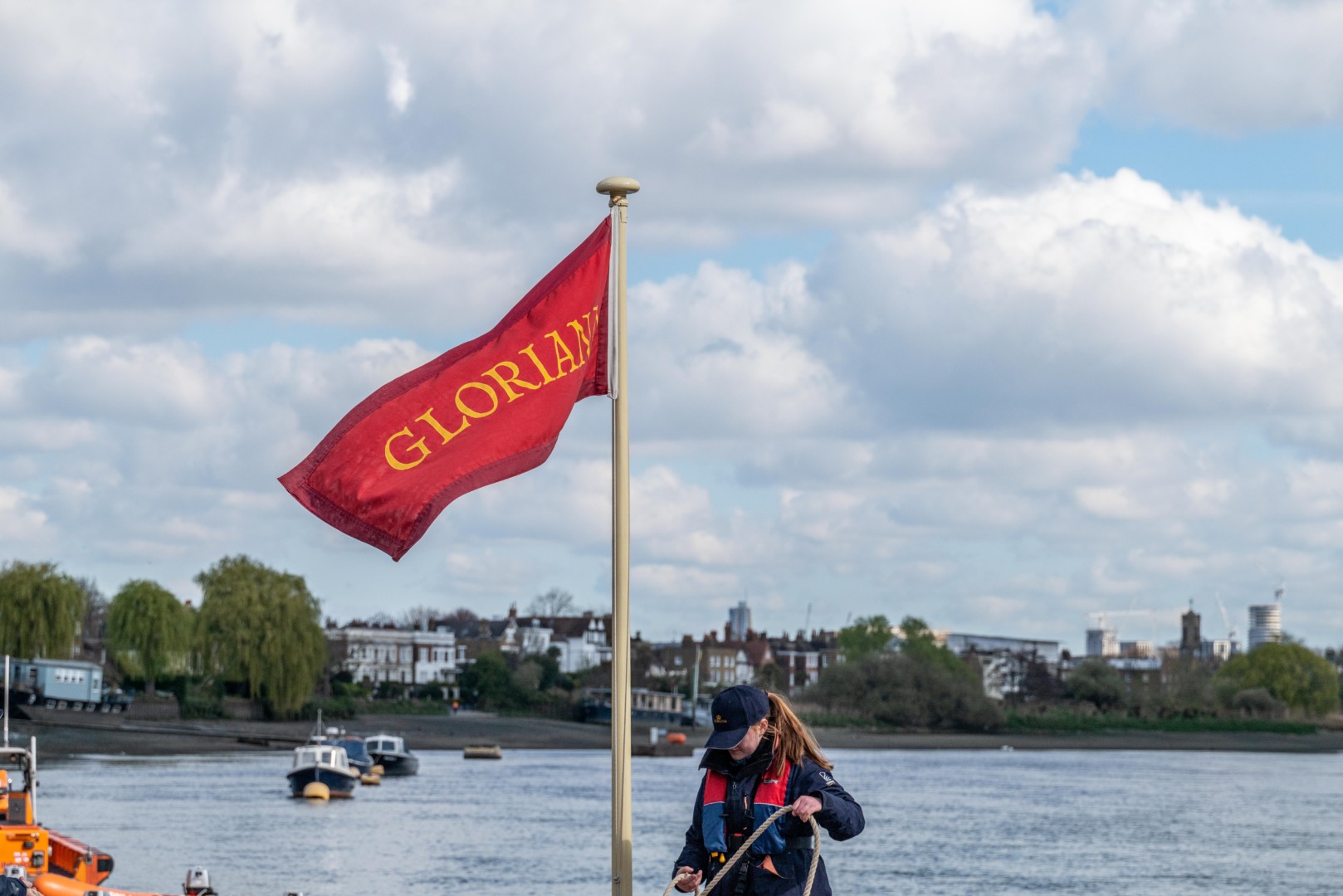
Great images and article. You were lucky to be able to capture these images.
Thanks for sharing
Jean
Thank you, Jean.
Well spotted – and later photographed. It is fantastic to think her Maj will wave her way along the Thames during the summer to celebrate her amazing reign.
You were very lucky here Mike, and thank you for sharing.
Very lucky. I saw it but didn’t think I would be allowed onto the pier because there’s a locked gate for access to the ramp. Police everywhere for security. However, when I came back with the camera I followed someone through the gate and looked as though I was official. They all though I was an approved photographer and we’re happy to chat and pose. Don’t get many opportunities like that.
Thanks for these marvellous photos Mike – and for the glamorous write up!
It was really good to lead the flotilla up before the Boat Race. All sorts of small craft accompanied us, including a Skerry, Wherry, Randan*, Trainera*, Pilot Gigs, Cornish Gigs and a Jolly Boat.
There were then traditional boat races, which overtook us near Hammersmith, firstly, of Pilot Gigs, then three Cutter races, Women’s crews, Mixed and finally, Men’s…
As we cleared Chiswick Bridge, the Women’s Boat Race was about to start.
We hope everyone on the bank enjoyed this – if you give us a big enough cheer next year, we’ll stop and salute you!
*Something to research on the web!
Thank you, Matthew. I did get pictures of the flotilla but didn’t have time to get them in the article and, in any case, they were not completely relevant. I will see if I can produce another article and, if you wouldn’t mind, I can fact check it with you before publication since I know two tenths of sod all about these matters…
It was built by ..darn; can’t remember his name: the cheeky chappie who builds rowing boats and hires them out and runs the moorings just beside Richmond Bridge, a little further upstream. Ah; Mark Edwards.
I remember that there was something peculiarly odd about the first engine(s) built into the boat – which seem to have been stripped out and replaced by, you say, electric motors. There was something decidedly daft about the original(s) or the propeller arrangement ..but I’d have to ask my friend Hilary to see if he remembers what it was.
There can be really strong currents on the Thames ..especially at Spring tides (higher and stronger than normal) ..so a bit of extra propulsion – even with 18 strong oarspeople – was thought to be prudent ..for manoeuvring, and for moving against the tide.
(The Thames is tidal from the sea up to Teddington, above Richmond, but half the falling tide is then held back between Teddington and Richmond by big metal gates to keep sufficient depth of water along that stretch for it to be navigable even when the tide has drained away further downstream around Kew ..where, at really low spring tides – when it’s only about two feet deep – you can walk right across the river on stepping stones to Old Isleworth on the other side.)
When a spring tide is rushing out, downstream, at about 2½ knots, along with the river’s own current of about 2½ knots, to make any headway at all upstream you’d have to be rowing that 10 ton barge somewhat faster than 5 knots!
Specially with a 7 length/beam coefficient
The good thing about Macfilosofers is that we seem to have an expert for any discipline we care mention! I know nothing about ships and boats but you are our expert.
Thanks for the nomination 😇Just to mean a long narrow boat slowly rowing in a current maneuvers difficulty. So the Queen could eventually end at the Estuary when tea is already cold.
Wish to become a photography expert soon!
I have been anchored with mine in my good times up current in a fluent river and know what’s about to handle the current with a one cylinder lighter like engine
On the motors again – people seem to have a fixation on them… the original motors were electric. Their replacements are electric. Unless travelling between events, we try never go against the tide – even though the river was a lot wider and more sedate n those days.
That’s how these rowbarges worked, they were the stretch limousine of their day. Rowers, even professionals, would not thank you for making them row against the tide. To assist when carrying the King from Hampton Court to London, there is a clock dating back to Henry VIII that shows the state of the tide at the Tower of London. Almost the whole of life in London revolved around the tides or was affected by them.
Thanks, George. I too thought it odd that the guy at the back had no view forward. As I said to Keith, as a non-nautical chap I got the ends wrong at first and thought it was rowing backwards. I was also interested to hear Captain Keith referring to “oarsmen” despite the fact that there were some prominent oarswomen. It seems that this is one “men” suffix that has stood the test of time.
Interesting, Mike
About the helmsman, just reading now that to comply MCA code he must be able to see water at a point two ships lengths in front of the boat!
Full technical info in here
http://www.stuartroy.co.uk/Page13.html
I did notice that the boss, Keith Baldwin, was standing in front of the oarsmen and was in radio communication with the helmsman. I suppose, also, it helps having a police launch to clear the way…
Won’t advice to avoid a water motorbike that way
As a Naval Architect I would recommend the 34 people having tea in the coach don’t suddenly move to see what happens through the starboard windows: that’s about two tons of flesh inside a ten tones barge.
A brilliant vessel with bizantine airs, actually looking like a big Venetian gondola. Majestic. Interesting choice for a british tradition by the way.
The one at the rudder can actualloy see nothing of the fore waters!
Super images of a very charismatic vessel. GB needs more of these types of attractions to showcase our design and construction skills. Gloriana is based at St Katharine Docks from April to November.
Thanks, Dunk. I will take a trip to St Katherine’s during the summer. it’s always a good spot for photography.
A magnificent sight, Mike. Lucky you were free when it appeared.
Hi Mike – fabulous photos! I thought they were pin sharp and beautifully rendered. It is indeed a magnificent vessel. When I looked at the first photo I assumed that the taller end of the boat was the prow but then realized that the rowers are in fact at the bow end of the barge. The crew look quite ‘motley’ and unlikely to win any prizes for speed! I presume they would all be decked out in splendid attire for the official procession – further limiting their ability to crank on those oars. I am guessing that is why the barge is also motorized – to ‘complement’ the manual propulsion by the crew… 🙂 Once again, great photographs of a unique vessel. You must have been very excited when you ran into it. All the best, Keith
Thanks, Keith. I too thought the boat was going backwards because the stern looks very much like a prow. In fact, at one stage it kept going back and forth past the pier under electric power and I really had no idea what they were up to. The crew were mostly Oxbridge academics as far as I could discern. I assume they were a temporary crew for the occasion, although there must be a regular crew for the Gloriana.
Just a note on the motors – we only use them when there are no rowers. After casting off, we were holding station, under power, waiting for the rest of the flotilla. Then we set off under oars. When folk are rowing, that’s the only power we use – it can make it difficult to row if the engines are on!
The “Motley Crew” consisted of four CUBC oarsmen, four OUBC. The rest were 10 experienced fixed seat rowers, from a wide range of backgrounds. The crew ages ranged from 20s to 70s – the rating certainly did not.
For formal occasions, the Royal Watermen are called into service, today there are 24 of them and the Royal Bargemaster takes command. He’s the fellow who carries the regalia to royal occasion, accompanied by Royal Watermen as footmen. You can recognise them by their red tunics and peaked caps.
You would enjoy the barge at The National Maritime Museum in Greenwich. An interesting story thanks. Did you just come across the barge on a walk or did you have prior knowledge?
Just passing, Kevin, and went home to get the camera.
A treat of an article and the pictures are lovely. A great reminder on the importance of having a camera always with you..
Absolutely marvellous! That said, I have to indulge in some nationalistic bragging: we do have someting comparable here in Stockholm, Sweden: the royal sloop Vasaorden. The original one was built in the 1770:s for king Gustavus III, and was used by, among many others, King Chulalongkorn of Siam in 1897. Unfortunately, the original vessel was totally wrecked in a fire in 1921. It was rebuilt soon after, and the new one has been in use since 1923, and still is. Your own queen Elizabeth was aboard the Vasaorden in 1983, and Akihito of Japan in 2010.
I´ve never had the opportunity to photograph it, but here is an image:
https://sv.wikipedia.org/wiki/Vasaorden_(kungaslup)#/media/Fil:Vasaorden_3.JPG
Thanks for this, Per. All grist to the mill…